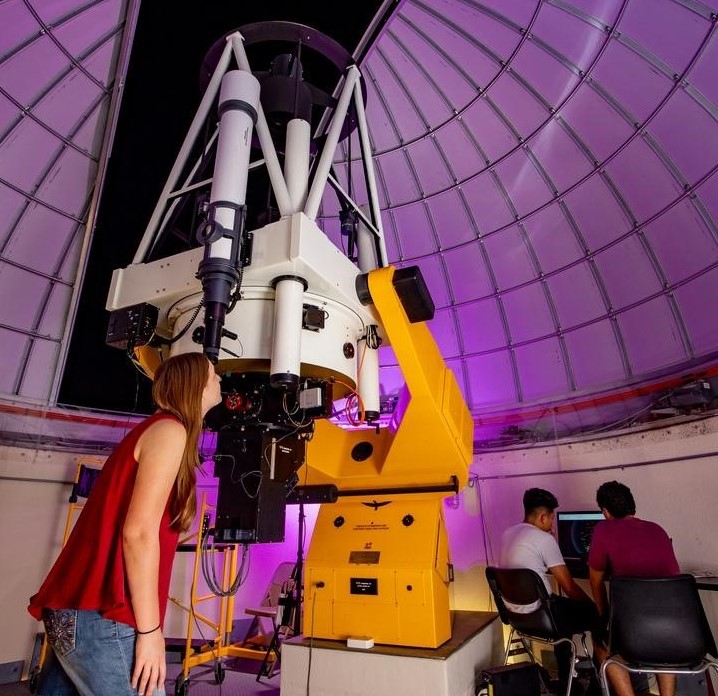Document Type
Article
Publication Title
The Astrophysical Journal
Abstract
The radio galaxy 3C 273 hosts one of the nearest and best-studied powerful quasar jets. Having been imaged repeatedly by the Hubble Space Telescope (HST) over the past twenty years, it was chosen for an HST program to measure proper motions in the kiloparsec-scale resolved jets of nearby radio-loud active galaxies. The jet in 3C 273 is highly relativistic on sub-parsec scales, with apparent proper motions up to 15c observed by very long baseline interferometry. In contrast, we find that the kiloparsec-scale knots are compatible with being stationary, with a mean speed of -0.2 ±0.5c over the whole jet. Assuming the knots are packets of moving plasma, an upper limit of 1c implies a bulk Lorentz factor Γ < 2.9. This suggests that the jet has either decelerated significantly by the time it reaches the kiloparsec scale, or that the knots in the jet are standing shock features. The second scenario is incompatible with the inverse Compton off the Cosmic Microwave Background (IC/CMB) model for the X-ray emission of these knots, which requires the knots to be in motion, but IC/CMB is also disfavored in the first scenario due to energetic considerations, in agreement with the recent finding of Meyer & Georganopoulos which ruled out the IC/CMB model for the X-ray emission of 3C 273 via gamma-ray upper limits.
DOI
10.3847/0004-637X/818/2/195
Publication Date
2-20-2016
Recommended Citation
Meyer, Eileen T.; Sparks, William B.; Georganopoulos, Markos; Anderson, Jay; van der Marel, Roeland; Biretta, John; Sohn, Sangmo Tony; Chiaberge, Marco; Perlman, Eric S.; and Norman, Colin, "An HST Proper-Motion Study Of The Large Scale Jet Of 3C273" (2016). Aerospace, Physics, and Space Science Faculty Publications. 344.
https://repository.fit.edu/apss_faculty/344


